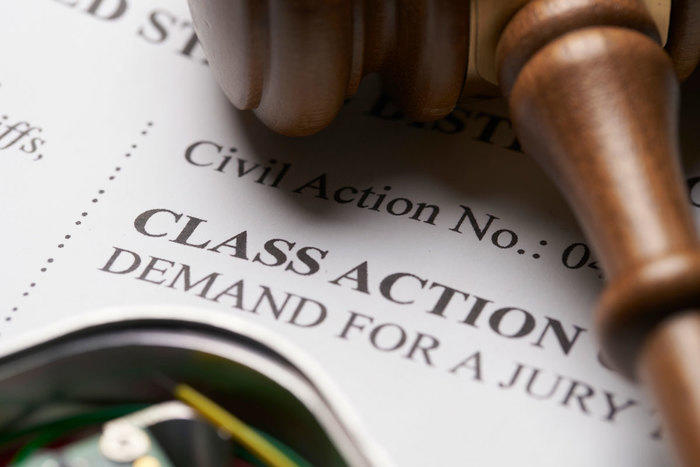Strength in Numbers: Checking Out the Effect of Class Action Lawsuits
Understanding Course Activity Legal Action: An Overview for Attorney
Class activity lawsuits have actually become an indispensable part of the lawful landscape, allowing for the consolidation of several cases into a solitary action. By delving right into the intricacies of course activity suits, this overview outfits attorneys with the expertise and tools needed to efficiently navigate this complex location of regulation.
The Basics of Class Activity Legal Actions
Class activity legal actions are a legal system used to consolidate similar insurance claims from a team of people right into a solitary claim, providing a economical and efficient technique to looking for justice and resolution. This sort of lawsuit permits a depictive plaintiff, acting on behalf of the entire class, to bring a case versus an offender that has supposedly created injury or violated the rights of multiple individuals.
The fundamental requirements for bringing a course activity claim include numerosity, commonality, typicality, and competence of depiction. Numerosity refers to the fact that the course need to be so large that joinder of all participants would be impractical.
Course activity legal actions can be helpful for both defendants and plaintiffs. For complainants, it allows them to merge their sources and share the dangers and expenses related to lawsuits. When they are up versus big companies or entities, it likewise gives a level having fun field. For defendants, it offers the possibility to efficiently solve several cases in a solitary legal action, preventing the need to resist many private legal actions.
Identifying and Assessing Prospective Class Participants
After establishing the basic needs for a course action suit, the next action is to determine and evaluate possible course members. If they meet the required standards., this process entails identifying who might be part of the course and evaluating their insurance claims to figure out.
To identify prospective course members, attorneys normally perform comprehensive study and collect appropriate info. This may include evaluating records, performing meetings, and taking a look at records to determine individuals or entities that may have been influenced by the claimed misdeed. It is important to develop a clear and thorough listing of potential course participants to make certain that all impacted parties are included in the claim.
Once potential course participants have been recognized, the next action is to assess their claims. This entails examining the advantages of each individual insurance claim to determine if they meet the legal demands for class certification. Lawyers have to meticulously examine the facts, proof, and lawful theories of each potential course participant's claim to make sure that they have a feasible case.
Assessing prospective course participants also includes identifying whether they satisfy the course meaning and have actually suffered comparable damage as an outcome of the offender's activities. This calls for comparing the facts and conditions of each potential class member's situation to the claims and lawful concepts presented in the claim.
Browsing the Course Certification Refine
To efficiently browse the class qualification procedure, attorneys must diligently comply with the procedural needs set forth by the court. Course accreditation is a critical step in a course action suit, as it establishes whether a case can proceed as a class activity, representing a group of individuals that have similar insurance claims versus a defendant. The procedure entails satisfying specific requirements, such as numerosity, commonness, typicality, and adequacy of depiction.
First of all, attorneys must establish numerosity by demonstrating that the course is so big that specific joinder is unwise. This calls for a comprehensive analysis of the insurance claims and defenses included.
Following, legal representatives should show typicality, which means that the depictive plaintiff's cases are common of the cases of the course members. This makes certain that the passions of the representative complainant line up with the interests of the class. Lastly, attorneys need to demonstrate adequacy of depiction, meaning that the depictive plaintiff and their advise will relatively and sufficiently represent the interests of the class.
To browse this procedure successfully, attorneys should extensively prepare by conducting extensive research study, collecting proof, and creating a compelling debate that pleases each of these criteria. They should additionally be prepared to reply to any type of obstacles or arguments elevated by the offender. By vigilantly sticking to the procedural needs stated by the court, lawyers can increase their opportunities of acquiring class qualification and advancing the passions of the class members.

Trick Strategies for Handling Course Activity Lawsuits
Upon efficiently browsing the class accreditation process, lawyers should then execute vital techniques for properly managing course action litigation. These methods are vital to ensure that the situation continues efficiently and successfully, inevitably making best use of the opportunities of a favorable result for the class members.
One key method is to establish a natural and strong legal group (Class action lawsuit). This entails constructing a group of lawyers with knowledge in class activity lawsuits, in addition to various other relevant areas such as the certain market or subject matter involved in the situation. A well-rounded group can bring various point of views and skills to the table, enhancing the overall effectiveness of the litigation
An additional essential technique is to establish a well-thought-out and comprehensive litigation strategy. This strategy should lay out the total objectives of the case, along with the particular legal theories and arguments that will be sought. It ought to likewise include a timeline and budget plan to guarantee that the case remains on track and within the assigned sources.
Additionally, legal representatives should proactively involve with the course participants throughout the lawsuits procedure (Class action lawsuit). This consists of giving routine updates on the progress of the situation, looking for input and feedback from the course participants, find more info and dealing with any type of concerns or issues they may have. By cultivating open interaction and cooperation, lawyers can develop trust and support amongst the course members, which can be instrumental in accomplishing an effective resolution
Clearing Up Class Activity Legal Actions: Arrangement and Authorization
When it concerns clearing up class action claims, efficient arrangement and obtaining authorization are essential steps in attaining a resolution. Class activity claims are complicated and involve a multitude of complainants, making it crucial to reach a negotiation that is reasonable and satisfying to all parties entailed.

As soon as a settlement agreement is reached, it needs to be accepted by the court. The court's function in this procedure is to make certain that the settlement is fair, affordable, and effectively safeguards the interests of the class participants. The court will consider elements such as the nature of the cases, the stamina website here of the evidence, the potential recuperation for the course members, and any arguments elevated by class participants.
Obtaining court authorization is essential as it offers finality to the negotiation and protects the passions of the course participants. It ensures that the negotiation is binding and enforceable, and class members can obtain their rightful payment.
Conclusion

Class activity legal actions have ended up being an indispensable component of the lawful landscape, permitting for the consolidation of multiple claims into a solitary activity. Class accreditation is a crucial action in a class action legal action, as it determines whether a case can proceed as a class activity, representing a team of people that have comparable cases versus a defendant. By faithfully sticking to the step-by-step requirements established forth by the court, attorneys can enhance their chances of obtaining class qualification and advancing the interests of the class members.
The court will consider factors such as the nature of the cases, the strength of the evidence, the potential healing for the course members, and any kind of objections increased by class members.
By determining and analyzing prospective course members, lawyers can figure out the viability of a class activity suit.